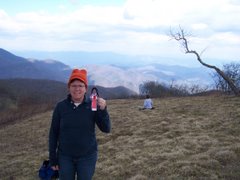John Applin, co-writer
5th grade teacher, Capon Bridge Elementary School
Capon Bridge, WV
Rebekah Lang, co-writer
7th grade teacher, Seven Generations Charter School
Emmaus, PA
2015 TTEC Cohort
July 23, 2015
Introduction
Belonging to this TTEC cohort can be simultaneously affirming and frustrating. In our meetings this week my pedagogy was affirmed. At the same time I find my pedagogy only scratching the surface of possibilities. Questing is one example.
Questing is active learning. Questers solve riddles posed as poems to gather clues. As questers gather a clue, they record it with a stamp. These clues add up to some treasure. As Delia wrote, students (young and old) “explore both familiar and new places, making exciting discoveries, building strong connections to cultural and natural heritage, and becoming stewards in the process.”
In a strictly education (traditional) perspective the possibilities appear limitless. Place based education is cross curricular. There are no lines demarcating subject areas in real life. Similarly, questing erases the artificial borders separating reading, writing, math, science, and social studies. Reading comes in the form of researching clues. Writing comes in the form of writing those clues. This process is made more rigorous as clues are written as rhymes. Science, math, and social studies are all included in those clues. Together, the clues lead to a “treasure”. What captures my attention is that this “treasure” is intrinsic. There is no tangible prize. The treasure is learning for learning’s sake.
Place based learning is at work across the country. What place does it hold in your educational toolbox?
Reflection
Years ago, I created “treasure hunts” for students I used to babysit as a way to edutain them. I’d write and hide clues around their property and then they’d get to go find them. Usually the reward was simple: they enjoyed puzzling and earned a “high-five.” I had created them because my favorite babysitter had done it for me when I was little. I had no idea that these “treasure hunts” were done around the world under another name! As a teacher, I was well-aware of “webquests” and somehow never realized they must have started before the internet as plain old “quests.” It seems so obvious now!
If quests were engaging enough for the children I babysat to want to do outside of school, I can imagine they would be a huge hit in my classroom too! I have brainstormed several ways in which I could tie them to my academic standards (7th grade ELA):
- Send the students on a quest in the beginning of the school year as an introduction to the building and resources(or perhaps limit this to my classroom)
- Make a novel-specific quest that has students searching in the book and around the classroom for text-to-world connections
- Use Google Earth to create a hybrid version of a quest (but not a true “webquest”) in which students travel the same route as protagonists in a story (e.g. Huck Finn or Laura Ingles Wilder)
- Have students create a quest of their neighborhoods or homes as a writing activity (focused on specific word choice, meter, rhyme or other style traits) as well as a community building/personal sharing activity
- Use quest-style clues as a review activity before a final exam or culminating event
- Assign a back-to-school night quest for parents (with QR codes to scan) around the school building to make the night more engaging
- Have students complete a quest or create one on the Appalachian Trail (or another local trail) to engage in nature and connect it to other learning (clues could relate to literature or non-fiction texts read as part of the pre-teaching for the hike)
Key Research and Findings
- Athman, Julie and Monroe, Martha, 2004. Julie and Monroe, Martha, 2004. The Effects of Environment-Based Education on Students’ Achievement Motivation. Journal of Interpretation Research, 9(1):9-25.
- Chawla, Louise, 2007. Student Gains from Place-based Education. Children, Youth and Environments Center for Research and Design.
- Chawla, Louise. 2007. Benefits of nature for children's health.Children,Youth and Environments Center for Research and Design.
- Duffin, Micahael and PEER Associates, 2006. Why Use Place-Based Education in Your School? Four Answers that Emerge from the Findings of PEEC, the Place-based Education Evaluation Collaborative.
- Ernst, Julie Athman and Monroe, Martha, 2004. The effect of environment-based education on students' critical thinking skills and disposition towards critical thinking.Environment Education Research, 10(4): 507-522.
- Falco, Edward H. 2004. Environment-based Education: Improving Attitudes and Academics for Adolescents. Evaluation report for South Carolina Department of Education.
- Liebermann, Gerald A. and Hoody, Linda 1998. Closing the Achievement Gap: Using the Environment as an Integrating Context for Learning State Education and Environment Roundtable.
- National Environmental Education Training Foundation (NEETF), 2000. Environment-Based Education: Creating High Performance Schools and Students. Washington, DC.
- Place-based Education Collaborative (PEEC), 2008. The Benefits of Place-based Education. Warner, NH. www.peecworks.org
- Rosenthal, Jennifer 2008. Place-based Education Research and Studies. Annotated bibliography. Doctoral Student, Curriculum & Instruction, SUNY at Albany, NY
- Semken, S. Journal of Geoscience Education. 2005. Sense of place and place-based introductory geoscience: teaching for American Indian and Alaskan Native undergraduates.
- State Education and Environment Roundtable (SEER). 2000. California Student Assessment Project: The Effects of Environment-Based Education on Student Achievement.
- American Institutes of Research, 2005. Effects of Outdoor Education Programs for Children in California.
- They Remember What They Touch: The Impact of Place-Based Learning in East Feliciana Parish. Rural School and Community Trust.


No comments:
Post a Comment